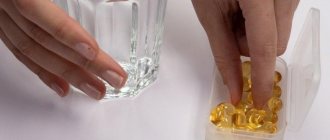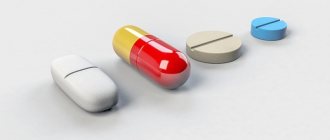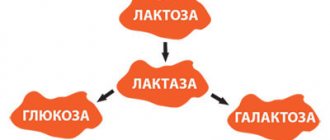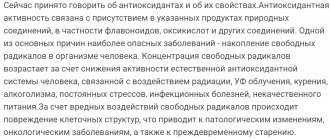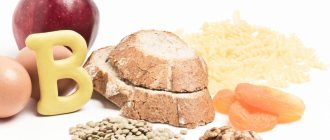Material about a blood test for vitamin D. Everyone knows about the benefits and importance of vitamin D for the body. It is needed for the development of the musculoskeletal system, the strength of bones, teeth and nails, and proper metabolism. It is also known where it comes from: exposure to the sun promotes its synthesis in the body itself, and fatty fish and dairy products replenish reserves from the outside.
How do you know if there is enough of this vitamin, if there is an excess, and what should you do if the balance is upset? The necessary information can be obtained using a special blood test for vitamin D.
Interaction with other elements
Vitamin D (calciferol) has a complex structure, which is similar in structure to a hormone molecule. Therefore, in medical literature it is often called a prohormone.
Vitamin D: 25-OH D2 (25-hydroxyergocalciferol) and 25-OH D3 (25-hydroxycholecalciferol) SEPARATELY in Moscow from 5 days.
from 5710 ₽
Sign up
Vitamin B12 in Moscow from day 1
from 500 ₽
Sign up
25-OH Vitamin D total (25-hydroxycalciferol) in Moscow from day 1
from 990 ₽
Sign up
The substance actively interacts with other vitamins, minerals and medications.
Groups of substances and drugs that interact with vitamin D are presented in the table below.
| Effect | Substances |
| Concomitant use is recommended | Phosphorus, calcium, magnesium, vitamin K2, omega-3 fatty acids |
| Neutralizes side effects | B vitamins |
| Impair absorption | Vitamin E in high concentrations, iron, anti-tuberculosis drugs |
| Increased side effects | antacids containing magnesium, cardiac glycosides, thiazide diuretics (hypothiazide, furosemide) |
The remaining substances are neutral to calciferol.
How to prepare for the test?
The analysis reveals the amount of the main metabolite of vitamin D - 25-OH. This metabolite has 2 forms - cholecalciferol (D3) and ergocalciferol (D2). In laboratory conditions, the number of cells of these forms is measured. In order for the result to be accurate, the patient must follow a number of rules before taking the test:
- Blood is donated from a vein on an empty stomach (at least 8 hours must pass between the last meal and the trip to the laboratory).
- Before donating blood, do not drink tea or coffee.
- The day before, avoid alcoholic drinks and fatty foods.
- Stop taking medications 2 days in advance; if it is impossible to stop, consult your doctor.
Normal vitamin D content in the body
Below are the minimum levels of calciferol that a person requires.
| Age | Quantity per day |
| up to 1 year | 10 mcg |
| 1-70 years | 15 mcg |
| over 71 years old | 20 mcg |
Pregnant and breastfeeding women also need 15 mcg of vitamin D per day.
References
1 . Martinaityte I. Storage of vitamin D in adipose tissue and associations between vitamin D related genetic variants and diabetes, myocardial infarction, cancer, death, and low bone mineral density Results from a high-dose vitamin D study and the Tromson Study; 2021 2. The original article was published on the RMJ website (Russian Medical Journal): https://bit.ly/2NNcYnC 3 . Shen SY, Xiao WQ, Lu JH, Yuan MY, He JR, Xia HM, Qiu X, Cheng KK, Lam KBH. Early life vitamin D status and asthma and wheeze: a systematic review and meta-analysis. BMC Pulm Med. 2021 Jul 20;18(1):120. doi:10.1186/s12890-018-0679-4. PMID: 30029599; PMCID: PMC6053833. 4. Del Valle E, Negri AL, Fradinger E, Canalis M, Bevione P, Curcelegui M, Bravo M, Puddu M, Marini A, Ryba J, Peri P, Rosa Diez G, Sintado L, Gottlieb E. Weekly high-dose ergocalciferol to correct vitamin D deficiency/insufficiency in hemodialysis patients: a pilot trial. Hemodial Int. 2015 Jan;19(1):60-5. doi: 10.1111/hdi.12209. Epub 2014 Sep 17. PMID: 25231816.
Signs and causes of vitamin D deficiency
A deficiency of a substance usually manifests itself gradually, without pronounced symptoms. The exception is rickets in children. It is important to identify and compensate for calciferol deficiency as early as possible.
Signs of hypovitaminosis D are:
- frequent infectious diseases, purulent complications even with minor injuries, wounds take a long time to heal;
- a feeling of chronic fatigue and weakness, it is impossible to concentrate even on the simplest tasks that previously did not require much effort;
- deterioration of emotional background;
- weakness of bone tissue, fragility or softening due to calcium metabolism disorders, joint and back pain.
- muscle pain - calciferol increases the elasticity of muscle tissue, and aching muscle pain often indicates a deficiency of this substance;
- gaining excess weight.
Of course, all of these signs are not necessarily the result of a lack of vitamin D. They can also appear in other conditions. But during diagnosis, you need to remember about the likelihood of calciferol deficiency. It is advisable to take a blood test for the content of this substance to rule out such a cause.
There are several main factors that cause a lack of vitamin D in the body:
- lack of sun;
- advanced age;
- obesity;
- smoking and alcoholism;
- unbalanced diet;
- chronic diseases;
- hormonal imbalance;
- genetic predisposition.
How to take vitamin D
Nowadays there is a lot of talk about vitamin D deficiency and the need to check its level. Especially among residents of northern latitudes, which include most of Russia. Some people dispute the need for prophylactic vitamin D supplementation in adults, while others associate almost all ailments with vitamin deficiency.
We have made a simple and understandable Vitamin D Calculator. Enter the results of the 25-OH vitamin D analysis into it and it will calculate the dosage and regimen you need.
Vitamin D Calculator
You made up your mind, you took the vitamin D test, you got the result and...?
The Russian Association of Endocrinologists suggests that 25-OH vitamin D levels above 30 ng/ml are considered sufficient. Anything below is insufficiency and deficiency.
Should we strive to increase this level to the upper limit of the reference intervals (100 ng/ml)?
No. Not worth it. Moreover, if the level of 25-OH vitamin D is above 80 mg/ml, it is worth reconsidering the intake of foods and medications containing vitamin D. Excessive intake of vitamin D can lead to hypervitaminosis (headache, abdominal pain, joint pain, calcium deposition in tissues ). It should be noted that exposure to the sun does not have a negative effect, even if the level of 25-OH vitamin D in the blood is 100 ng/ml.
What to do if your vitamin D test is normal?
Maintain this indicator at the level of 30-60 ng/ml. Walking in the sun? Do you eat fish? If not, doctors recommend taking colecalciferol (vitamin D3) drugs in a prophylactic dosage of 800-1000 IU per day. A higher dosage (1500-2000 IU) is recommended for people over 50 years of age, with fractures, in the complete absence of sun exposure, and with a pre-existing vitamin D deficiency to prevent relapse. If you have obesity or problems with the gastrointestinal tract, it is recommended to increase the daily dose of vitamin D to 3000-6000 IU.
What to do if there is a lack of vitamin D in the blood?
If the result of the 25-OH vitamin D test is 20-29 ng/ml, it is recommended to take colecalciferol (D3) drugs in a total dose of 200 thousand IU over 4 weeks:
- once a month – 200 thousand IU
- once a week – 50 thousand IU
- once a day – 7 thousand IU
- If there is obesity or problems with the gastrointestinal tract, the daily dose of vitamin D is increased to 8000 - 10000 IU.
You can use our recommendations for taking vitamin D. The calculator will calculate the dosage and offer you a dosage regimen.
Vitamin D Calculator
What if the 25-OH vitamin D result is less than 20 ng/ml?
Everything is the same, but for a period of 8 weeks (total dosage of vitamin D 400 thousand IU).
How to convert ME into drops and capsules?
IU in English is denoted IU. The description of each drug states the content of IU (IU) in 1 drop (drop) of liquid form or in 1 capsule. Be careful, because the same dosage in drops or capsules of different drugs may contain different amounts of vitamin D. With your doctor, choose a drug with a dosage that is convenient for taking depending on the prescribed treatment/prevention regimen for vitamin D deficiency.
What to do if you take vitamin D for a long time?
Get tested for vitamin D. It is dangerous to take more than 4 thousand IU of vitamin D daily for longer than 6 months without control (more than 10 thousand IU against the background of obesity).
Which vitamin D supplement should you choose?
When treating vitamin D deficiency/insufficiency, preference is given to the D3 form (colecalciferol). Not all forms and dosages of vitamin D are available in Russia. Do not choose the active metabolites of vitamin D and their analogues - calcitriol and alfacalcidol - on your own. They are used as prescribed by a doctor according to strict indications, under the control of calcium levels in the blood and urine, and the level of parathyroid hormone in the blood.
Can I use a combination of vitamin D and calcium?
When treating vitamin D deficiency/insufficiency due to osteoporosis, endocrinologists recommend simultaneous intake of vitamin D and calcium (500-1000 mg). Find out what calcium supplements are, who they are indicated for and how they are dosed in the article How to take calcium supplements.
Based on: Clinical guidelines “Vitamin D deficiency in adults”, 2021. – Russian Association of Endocrinologists.
The interpretation of test results, the choice of further examination and treatment is carried out by the attending physician.
Consequences of a lack of vitamin D in the body
Hypovitaminosis D leads to aggravation of many chronic diseases:
- diabetes mellitus type 1 and 2;
- migraines;
- atherosclerosis;
- arrhythmias;
- arterial hypertension;
- depression;
- senile dementia;
- Alzheimer's disease;
- autism spectrum disorders;
- psoriasis, eczema and other skin diseases;
- Crohn's disease;
- periodontal disease;
- bronchial asthma, etc.
Another serious consequence of a lack of this substance in infancy is rickets.
Signs and causes of excess vitamin D
The main symptoms of hypervitaminosis D:
- pain in joints, stomach and muscles;
- severe weakness;
- headache;
- drowsiness;
- nausea and vomiting;
- thirst;
- convulsions are possible;
- weight loss;
- constipation or diarrhea;
- polyuria;
- arterial hypertension;
- elevated temperature.
Often, an excess of calciferol occurs in children. The reasons are quite simple. Frightened mothers, with good intentions, instead of a few drops, give the drug to the child with spoons.
Consequences of excess vitamin D
Consequences of overdose:
- blockage of the bladder and ureters;
- calcification of the lungs, kidneys and heart;
- calcium deposition in blood vessels;
- the occurrence of pancreatitis;
- development of mastitis and lactostasis if hypervitaminosis D appeared during breastfeeding.
An overdose has a negative effect on bones and muscles. Excessive amounts of the substance stiffen connective tissue and lead to brittle bones. This provokes fractures, sprains, dislocations and other injuries.
Hypervitaminosis also causes disruptions in the synthesis of hormones and the production of a number of enzymes necessary for the normal functioning of the body. When nerve fibers calcify, neuroimpulses slow down, coordination of movements worsens, and convulsions and tremors appear.
What is the danger of hypervitaminosis D
Hypervitaminosis of vitamin D is indicated by results of 25 (OH)D exceeding 150 ng/ml. This phenomenon is rare, especially among people living in temperate, northern latitudes. Excess cholecalciferol can develop against the background of an overdose of special medicinal supplements containing high doses of the active substance. The second reason that can trigger an increase in vitamin D levels is individual hypersensitivity.
Hypervitaminosis develops very slowly. Symptoms are often not taken seriously, although over time they lead to severe irreversible consequences:
- calcification of large blood vessels supplying the heart;
- pulmonary stenosis;
- formation of kidney stones;
- persistent anemia;
- uncharacteristic premature atherosclerosis;
- renal failure;
- hepatitis caused by intoxication.
An excessive increase in vitamin D levels is indicated by signs that are mistakenly mistaken for somatic diseases:
- sudden change in appetite;
- anorexia;
- constant feeling of thirst;
- an increase in the volume of urine excreted by more than three liters per day;
- frequent bouts of persistent vomiting;
- diarrhea for no apparent reason;
- temperature rise to low-grade levels;
- cardiopalmus;
- alternating periods of excitation and inhibition;
- convulsive attacks.
In young children, vitamin D hypervitaminosis is manifested by premature closure of the fontanel and too rapid fusion of the sutures of the skull. If measures are not taken to intoxicate the body, everything can end in the death of the child.
Rules for taking vitamin D
Rules for taking pharmaceutical calciferol:
- The drug is taken in the first half of the day (during breakfast or lunch), as it can activate the nervous system. This leads to overexcitation and insomnia. This is especially important to consider when the drug is given to children.
- The substance is a fat-soluble vitamin, so it is advisable to eat something fatty while taking it. This way it is better absorbed by the body.
- Vitamin D and E should be taken separately. When taken together, the absorption of both substances deteriorates.
Preparing for a thyroid-stimulating hormone (TSH) test
TSH levels are the most sensitive test for assessing thyroid function. However, it remains the most frequently deviating from the reference interval among all hormonal studies. To obtain reliable results, in addition to the general rules for preparing for laboratory tests, it is important to follow the rules below:
- The TSH level changes significantly during the day: its highest concentration is determined in the morning, and its minimum in the evening. You should donate blood at the same time, especially in case of repeated tests, since the time of blood donation plays an important role in the interpretation of the TSH level.
- In the case of thyroid hormone replacement therapy, it is necessary to take the drug after drawing blood for testing. Taking thyroxine and iodine the day before the test does not affect the TSH concentration. It is advisable to carry out repeated studies of TSH levels in order to monitor therapy no earlier than 6 weeks after changing the dose or type of drug.
- It must be remembered that the TSH result may be distorted by the effects of medications taken or the products of their metabolism. Before donating blood for analysis, you should consult your doctor about the possibility of limiting the intake of medications during the period of preparation for the study. It is recommended that you stop taking medications, including dietary supplements, before the study. If it is impossible to stop taking medications, you should provide the name of the drug and the time of its last use when donating blood.
- The thyroid gland is associated with the work of many organ systems, disorders in which can affect the secretion of the hormone: acute and chronic stress, acute infectious diseases, disorders of lipid and vitamin metabolism, leading to excess cholesterol, homocysteine, as well as disturbances in sleep patterns and wakefulness at night, which disrupt the normal rhythm of TSH secretion. The influence of these conditions must be taken into account when interpreting the results if it is not possible to postpone the study to a later date.
- Different research methods may be used in different laboratories, therefore, in order to correctly evaluate the research results, it is necessary to conduct research in the same laboratory and on the same analytical system.
Vitamin D Rich Foods
List of foods high in calciferol:
- Fish. Considered the best source of vitamin D. It is advisable to consume fatty types, such as mackerel, salmon or tuna. Just 100 g of cooked salmon contains almost a daily dose of calciferol.
- Milk and dairy products. They contain not only vitamin D, but also calcium. Cheese and yogurt are especially rich in these substances. But dairy products are often very fatty, so they should be consumed in moderation to avoid gaining excess weight.
- Egg yolks. A medium-sized egg contains approximately 10% of the daily value of calciferol. The highest concentration of the substance is found in the yolk.
- Mushrooms. Mushrooms contain the plant sterol ergosterol. This substance is a precursor to vitamin D. When exposed to sunlight, mushrooms naturally synthesize calciferol.
It is important to remember that taking vitamin complexes with calciferol must be taken according to strict indications. It is unacceptable to exceed the dosage of the drug and other violations of the instructions. An overdose (as well as a deficiency) of vitamin D greatly harms the body. It provokes disruptions in the functioning of the cardiovascular, endocrine and nervous systems.
Preventive measures to prevent vitamin D deficiency.
To maintain sufficient levels of vitamin D in the body, you must follow 3 simple rules:
- Walk outdoors every day. 15 minutes a day is enough for the body to synthesize vitamin D. Direct sunlight should hit the skin, so leave areas of the body without sunscreen (hands, face) exposed so as not to interfere with this important process.
- Review your diet. It should contain a sufficient amount of the following products: meat, fish, eggs, dairy and fermented milk products.
- If necessary and as prescribed by a doctor, you can take a course of vitamin complexes.
